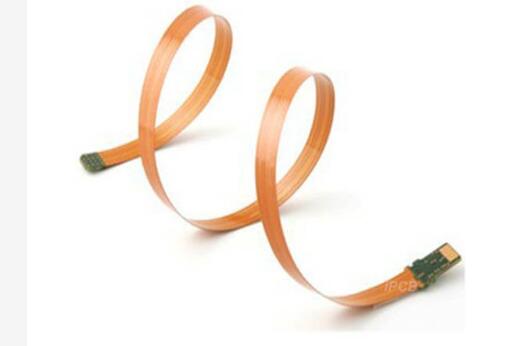Two-layer flexible circuit board is a conductive pattern made by etching one layer on each side of the insulating substrate film. Metalized holes connect the patterns on both sides of the insulation material to form conductive pathways to meet the design and functional requirements of flexibility. The covering film can protect single and double-sided wires and indicate the position of the component placement.

A 2-layer flexbile circuit board is composed of two layers of circuits, with two designs: through hole and no through hole. A 2-layer flexible board with no through-hole design allows signals to be transmitted on only one side. A 2-layer circuit board with a hole design allows terminal signals of electronic components to be transmitted on both sides through the through-hole design, thus enabling the possibility of components being installed on either side.
Flexible circuit boards can be divided into single-sided, double-sided, and multi-layer boards. The substrate used is mainly polyimide copper clad plate. This material has high heat resistance and good dimensional stability and is pressed into the final product with a covering film that combines mechanical protection and good electrical insulation performance. The surface and inner conductors of double-sided and multi-layer printed circuit boards are metalized to achieve electrical connections between the inner and outer circuits.
Flexible circuit boards are mainly used in the connection parts of electronic products, such as mobile phone cables, LCD modules, etc. Compared to hard boards, they are smaller in size, lighter in weight, and can achieve advantages such as bending, bending, and three-dimensional assembly. Generally, most soft boards require components to be attached.
Advantages of flexible circuit boards
1. It is flexible and can be freely bent and folded, without damage even after thousands of twists and turns. It can be arranged according to the spatial layout and can be freely expanded and moved in three-dimensional space, achieving the integration of component assembly and wiring, with high flexibility.
2. Flexible circuit boards are lightweight and flat, making the equipment structure layout more compact and reasonable, reducing product volume, reducing weight, and facilitating portability, promoting the development of electronic products with high density, high reliability, and miniaturization.
3. Strong safety, as the wires of the flexible circuit board are connected as a whole, and various parameters are highly consistent, it can reduce errors during wire installation and reduce the occurrence of faults.
4. High assembly reliability. The planar wiring of flexible circuit boards can reduce switch interconnections, facilitate circuit design, reduce assembly work, improve the reliability of the entire system, and facilitate fault detection.
5. Design flexibility. Inductance, capacitance, characteristic impedance, etc. can affect the transmission performance of the product. The flexible circuit board design is controllable, with excellent electrical performance, and can be designed as controllable high-power parameters with transmission line characteristics.
6. It has good heat dissipation, weldability, and easy assembly and connection. There are various substrates available, and different substrates can be used according to different requirements.
2 layer flexible circuit board provides excellent electrical performance, which can meet the design needs of smaller and higher density installations, as well as help reduce assembly processes and enhance reliability.